Christian art has a profound ability to convey the depths of faith, the struggles of humanity, and the triumphs of the divine. Throughout history, many masterpieces have emerged, each with its own unique story and significance. In this blog post, we delve into ten famous Christian paintings, exploring the themes, symbolism, and the artists behind these timeless works.
1. The Storm on the Sea of Galilee by Rembrandt
Artist: Rembrandt van Rijn
Year: 1633
Location: Stolen from the Isabella Stewart Gardner Museum, Boston (1990)
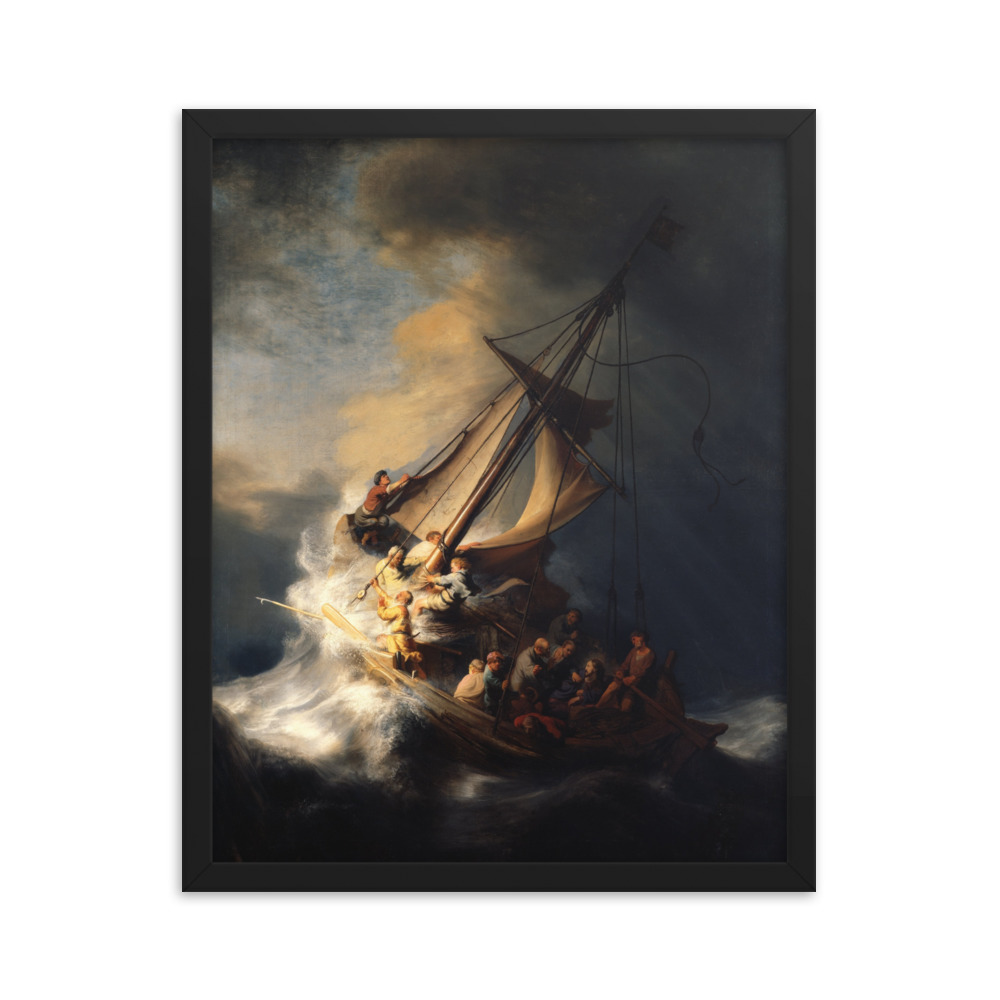
The Storm on the Sea of Galilee
Rembrandt’s “The Storm on the Sea of Galilee” captures the dramatic biblical scene from the Gospel of Mark (4:35-41), where Jesus calms a fierce storm, demonstrating his divine power. The painting is noted for its dynamic composition, with the chaotic waves and terrified disciples contrasting the calm and serene Jesus. This masterpiece not only showcases Rembrandt’s skill in rendering light and movement but also serves as a powerful reminder of faith amidst life’s tempests.
2. The Archangel Michael Defeating Satan by Guido Reni
Artist: Guido Reni
Year: 1636
Location: Santa Maria della Concezione dei Cappuccini, Rome
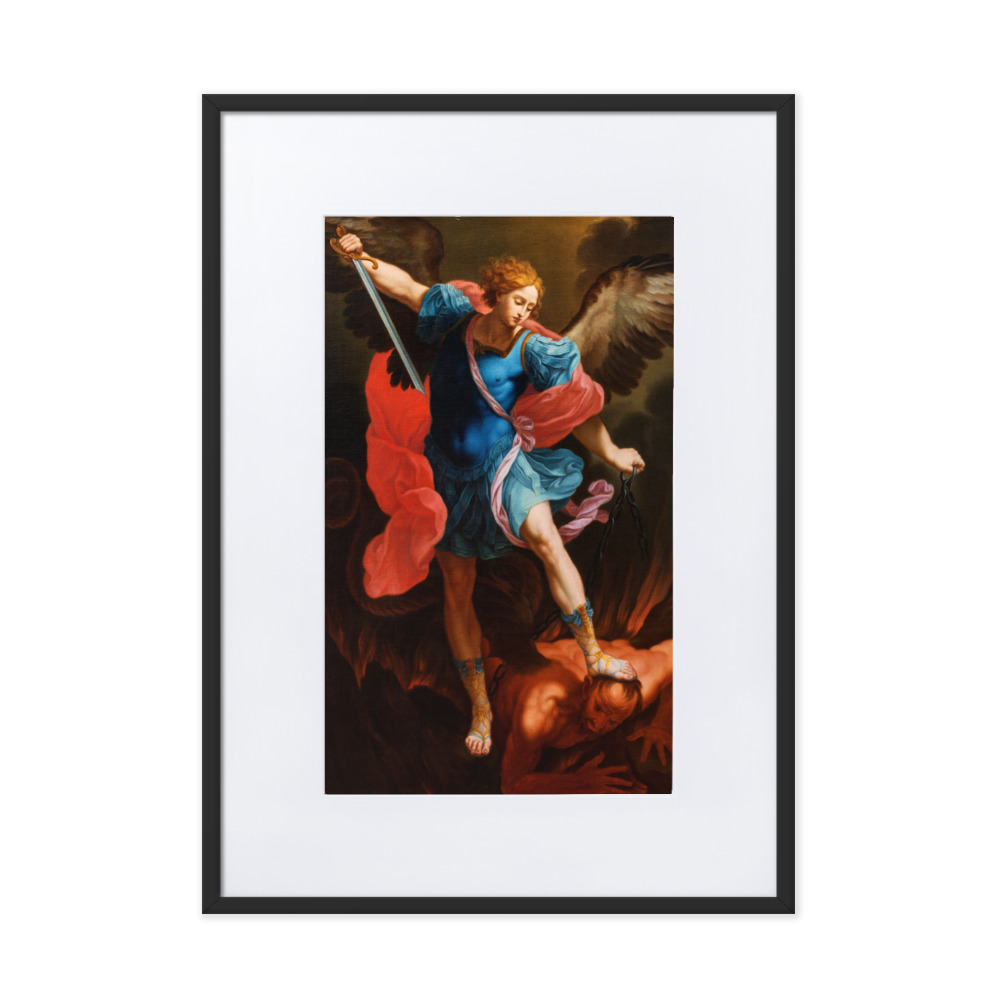
The Archangel Michael defeating Satan
Guido Reni’s “The Archangel Michael Defeating Satan” depicts the triumph of good over evil. Michael, the warrior archangel, is shown vanquishing Satan, symbolizing the ultimate victory of divine justice. Reni’s use of dramatic lighting and dynamic poses emphasizes the celestial power and authority of Michael, making this painting a celebrated representation of spiritual warfare and divine intervention.
3. The Incredulity of Saint Thomas by Caravaggio
Artist: Caravaggio
Year: 1601-1602
Location: Sanssouci Picture Gallery, Potsdam

The Incredulity of Saint Thomas
Caravaggio’s “The Incredulity of Saint Thomas” portrays the moment when the doubting Thomas places his finger into Christ’s wound, as described in the Gospel of John (20:24-29). The painting is renowned for its realistic depiction and dramatic use of chiaroscuro, highlighting the human emotions of doubt and belief. Caravaggio’s intense realism and focus on human psychology bring this biblical story to life, emphasizing the theme of faith and evidence.
4. Daniel in the Lions’ Den by Peter Paul Rubens
Artist: Peter Paul Rubens
Year: c. 1615
Location: National Gallery of Art, Washington, D.C.

Daniel in the Lions Den
Peter Paul Rubens’ “Daniel in the Lions’ Den” illustrates the story from the Book of Daniel (6:16-23), where Daniel is miraculously preserved in a den of lions. Rubens masterfully captures the tension and serenity of the moment, with Daniel calmly praying amidst the ferocious beasts. This painting highlights the themes of divine protection and unwavering faith in the face of danger.
5. Michael Vanquishing Satan by Guido Reni
Artist: Guido Reni
Year: 1635
Location: Louvre Museum, Paris
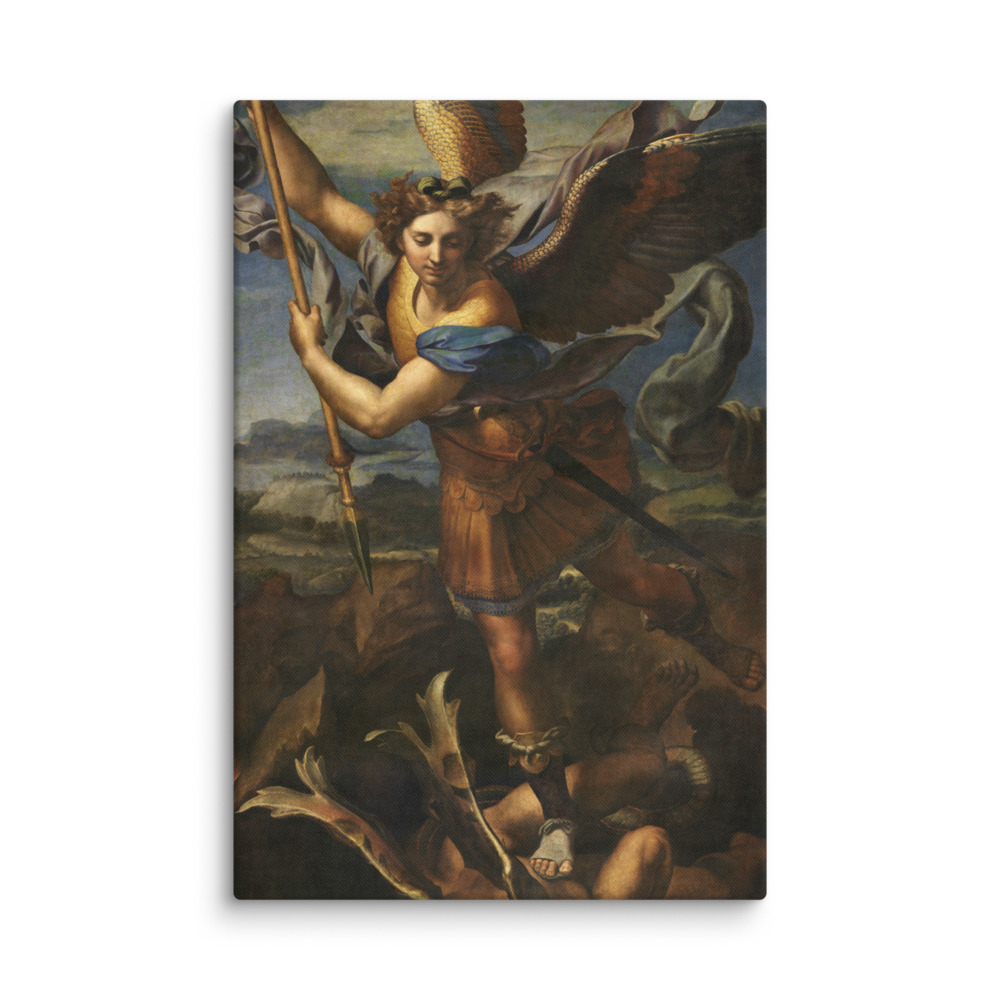
Michael Vanquishing Satan
Another stunning work by Guido Reni, “Michael Vanquishing Satan,” is a variation of his earlier depiction of the archangel Michael. This version, housed in the Louvre, continues to explore the theme of divine victory over evil. Reni’s skillful use of color and composition enhances the celestial drama, making this piece a significant portrayal of the cosmic battle between good and evil.
6. The Garden of Eden with the Fall of Man by Peter Paul Rubens and Jan Brueghel the Elder
Artists: Peter Paul Rubens and Jan Brueghel the Elder
Year: 1615
Location: Mauritshuis, The Hague
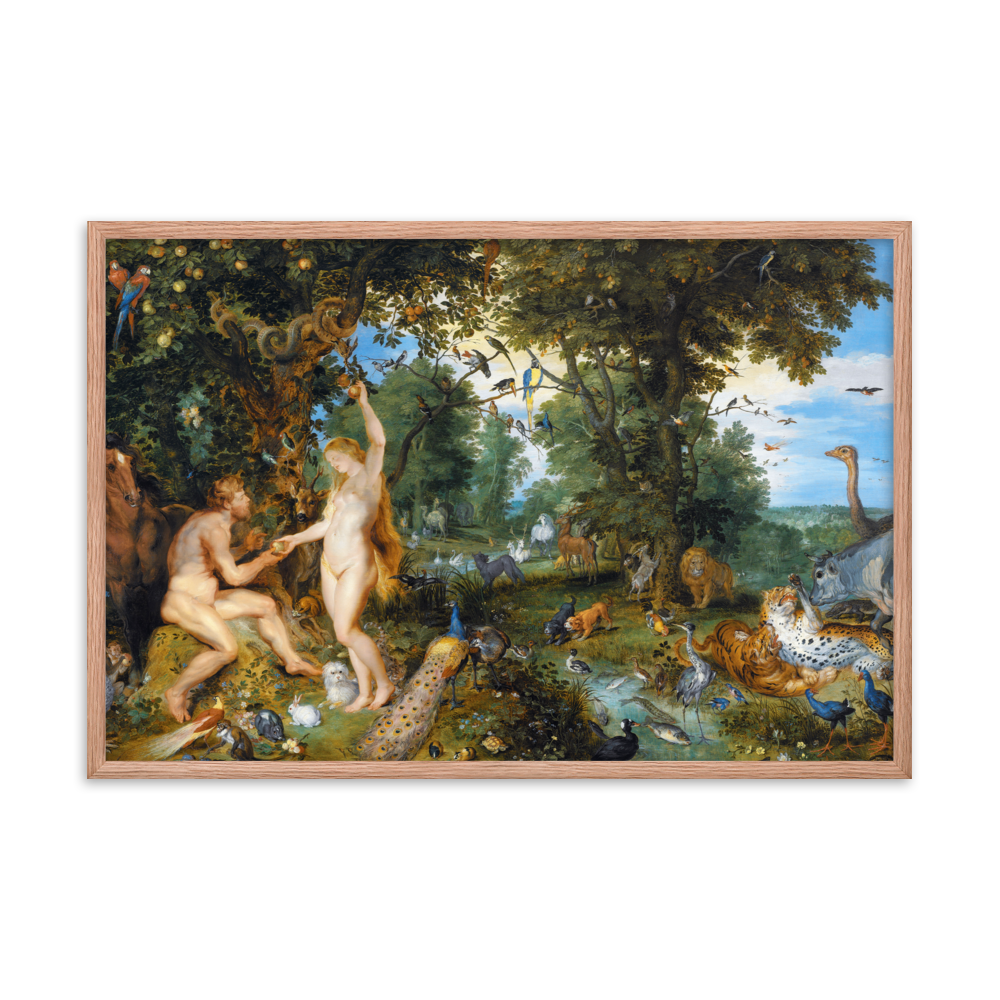
The Garden of Eden with the Fall of Man
“The Garden of Eden with the Fall of Man” is a collaborative work by Rubens and Brueghel. Rubens painted the figures, while Brueghel executed the lush landscape. This painting captures the moment of temptation and the fall of Adam and Eve, introducing sin into the world. The detailed and vibrant depiction of the Garden of Eden contrasts with the ominous presence of the serpent, emphasizing themes of innocence, temptation, and the consequences of disobedience.
7. Christ’s Appearance to Mary Magdalene by Alexander Ivanov
Artist: Alexander Ivanov
Year: 1835
Location: Tretyakov Gallery, Moscow
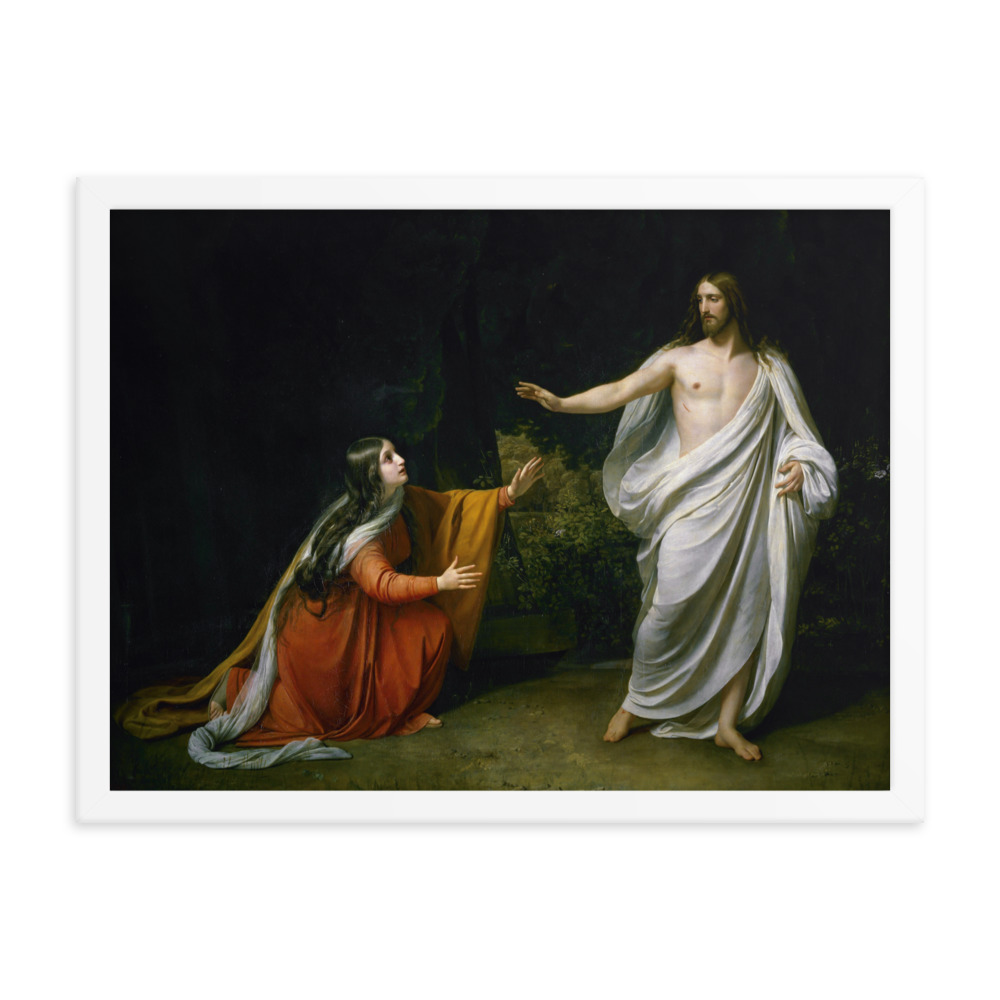
Christ’s Appearance to Mary Magdalene
Alexander Ivanov’s “Christ’s Appearance to Mary Magdalene” depicts the poignant moment when the risen Christ appears to Mary Magdalene, as described in the Gospel of John (20:14-18). The painting beautifully captures the emotional intensity of the encounter, with Mary Magdalene’s expression of awe and devotion. Ivanov’s meticulous attention to detail and use of soft, natural light enhance the spiritual significance of this resurrection scene.
8. The Entry of the Animals into Noah’s Ark by Jan Brueghel the Elder
Artist: Jan Brueghel the Elder
Year: 1613
Location: J. Paul Getty Museum, Los Angeles
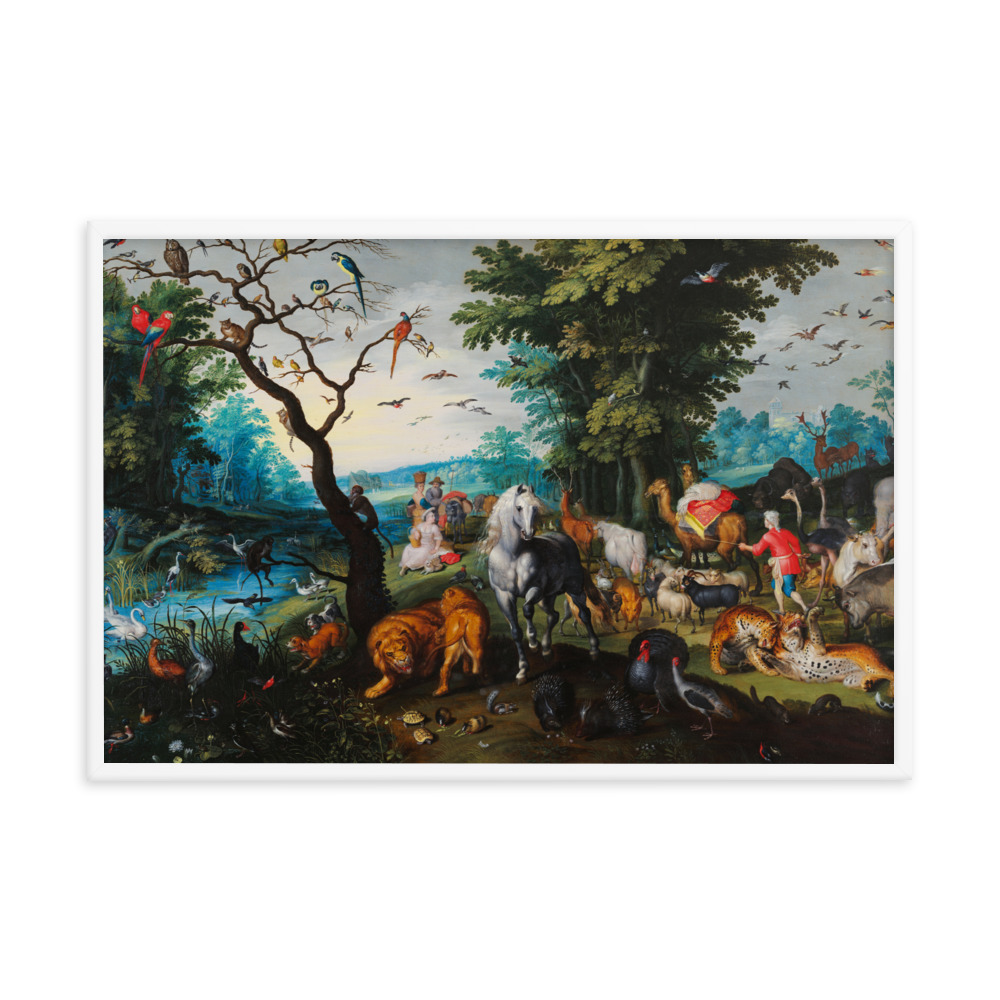
The Entry of the Animals into Noah’s Ark
Jan Brueghel the Elder’s “The Entry of the Animals into Noah’s Ark” is a vibrant and detailed portrayal of the biblical story from the Book of Genesis. The painting showcases Brueghel’s mastery in depicting a wide variety of animals, each rendered with exquisite detail. This lively and colorful scene emphasizes themes of preservation, obedience to God, and the harmony of creation under divine command.
9. Ecce Homo by Mateo Cerezo
Artist: Mateo Cerezo
Year: c. 1660
Location: Museo del Prado, Madrid
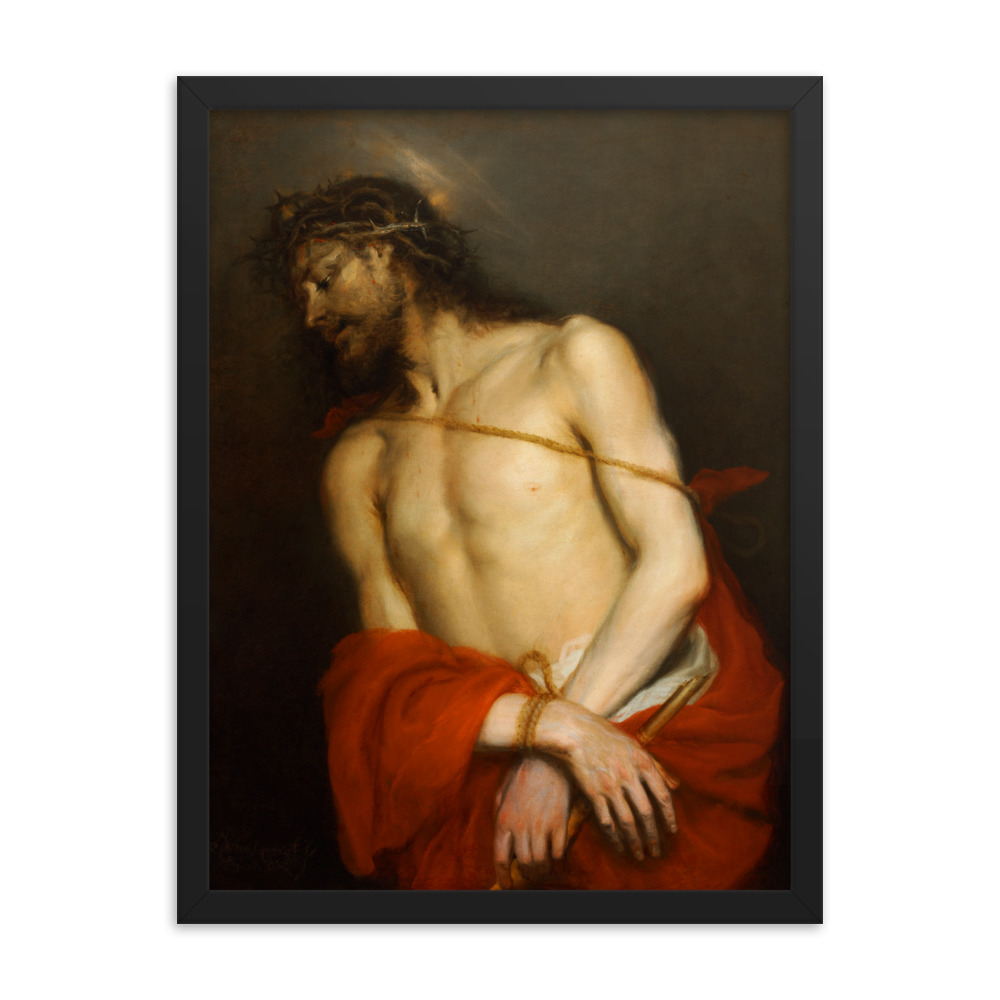
Ecce Homo
“Ecce Homo” by Mateo Cerezo depicts the moment when Jesus, crowned with thorns and draped in a purple robe, is presented to the people by Pontius Pilate (John 19:5). The painting captures the suffering and dignity of Christ, with Cerezo’s use of dramatic lighting and emotional expression. This powerful image serves as a meditation on the themes of sacrifice, redemption, and the profound love of Christ for humanity.
10. The Flight into Egypt by Nicolas Poussin
Artist: Nicolas Poussin
Year: 1657
Location: Hermitage Museum, Saint Petersburg
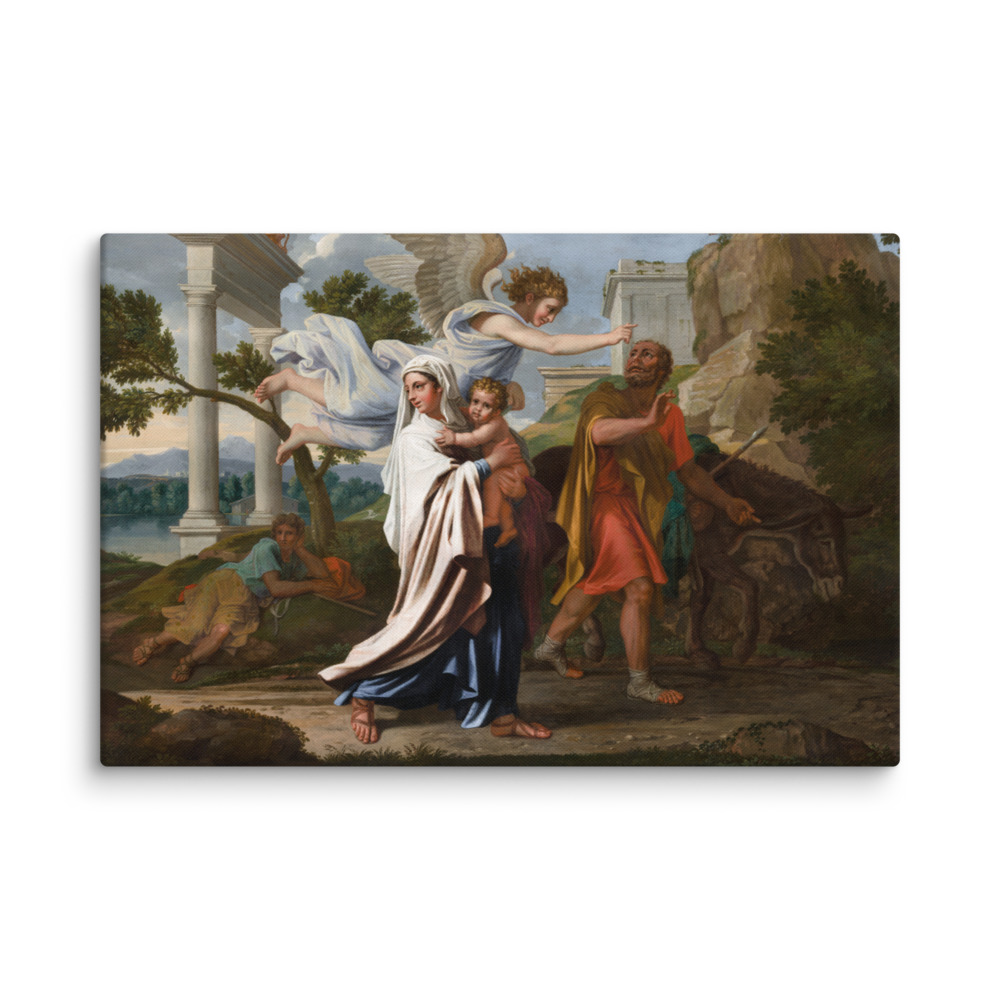
The Flight into Egypt
Nicolas Poussin’s “The Flight into Egypt” illustrates the Holy Family’s escape to Egypt to avoid King Herod’s massacre, as recounted in the Gospel of Matthew (2:13-15). Poussin’s classical composition and serene landscape provide a tranquil backdrop to this perilous journey. The painting emphasizes themes of divine guidance, protection, and the fulfillment of prophecy, highlighting the resilience and faith of the Holy Family.
Purchasing reprints of famous Christian paintings allows you to bring the profound beauty and spiritual significance of these masterpieces into your own home. These artworks, created by renowned artists like Rembrandt, Caravaggio, and Rubens, not only add an aesthetic appeal to your living space but also serve as daily reminders of faith, hope, and divine inspiration. Reprints offer an affordable way to own a piece of art history, enabling you to appreciate the intricate details and powerful messages conveyed through these iconic works. Additionally, displaying these reprints can spark meaningful conversations about faith and art with family and friends, enriching your home with cultural and spiritual depth. Whether you are seeking to enhance your personal devotion, decorate your worship space, or simply enjoy the beauty of Christian art, reprints of these famous paintings provide a timeless and valuable addition to any collection.
